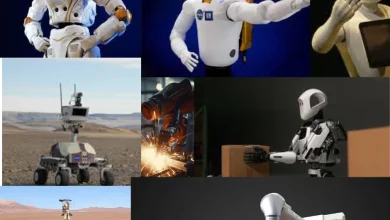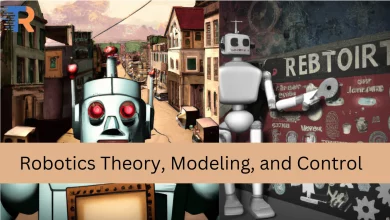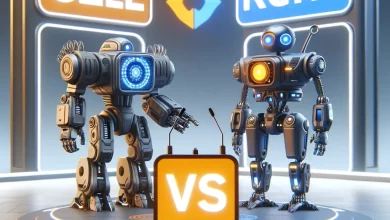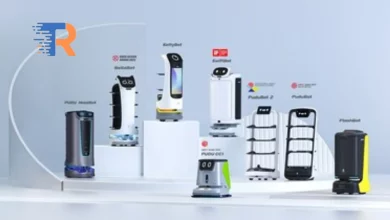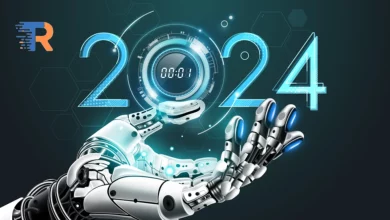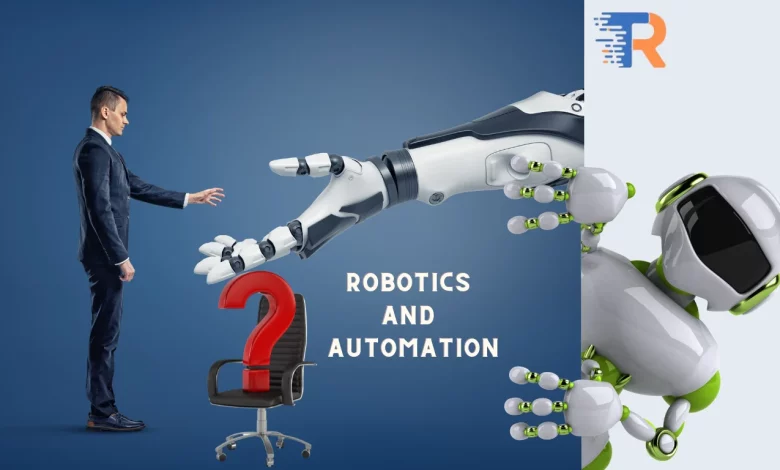
In the rapidly advancing landscape of technology, Robotics And Automation stand as a beacon of innovation, fundamentally altering industries by their ability to operate independently and intelligently. This comprehensive exploration delves into the multifaceted world of autonomous robots, focusing on their applications in agriculture and industrial settings. From the sprawling fields of farming to the bustling floors of factories, these machines are at the forefront of reshaping how we work and produce, ushering in an era of efficiency and precision that holds promises for sustainable development.
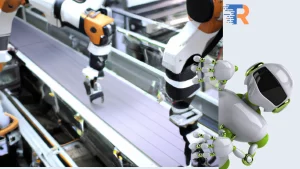
Understanding Robotics And Automation:
At the heart of the robotics and automation revolution lies a convergence of cutting-edge technologies. These intelligent machines embody a fusion of sensors, algorithms, and machine learning, empowering them to navigate environments, make informed decisions, and execute complex tasks without continuous human intervention. The adaptability of these robots to diverse settings, coupled with their capacity to learn from experiences, distinguishes them as true pioneers in the realm of artificial intelligence.
Autonomous Robots in Agriculture:
The integration of robotics and automation into agriculture has not only streamlined existing processes but has also birthed entirely new paradigms of farming. Equipped with state-of-the-art sensors, cameras, and machine learning algorithms, these robots undertake a multitude of tasks, from planting and harvesting to monitoring crop health.
- A case in point is the “Harvest CROO Robotics” system, a revolutionary autonomous harvesting system designed to efficiently pick strawberries. By automating this labor-intensive process, it not only reduces costs but also significantly increases harvesting speed, addressing critical challenges in the agricultural sector.
- Precision agriculture, an emerging frontier in farming, showcases the precision and efficiency of autonomous robots. These robots analyze soil conditions, apply fertilizers, and plant seeds with unparalleled accuracy, optimizing crop yields and minimizing resource usage. Companies like Blue River Technology exemplify this with their “See & Spray” robot, which utilizes computer vision to identify and precisely spray herbicides on individual weeds, reducing environmental impact.
- In addition to planting and harvesting, robotics and automation equipped with advanced imaging technology are increasingly being used for crop monitoring. These aerial vehicles provide real-time data on crop health, allowing farmers to make informed decisions regarding irrigation, fertilization, and pest control. The integration of robotics in agriculture not only enhances productivity but also promotes sustainable and resource-efficient farming practices.
Autonomous Robots Integration in Industrial Robotics:
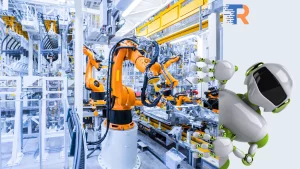
The incorporation of robotics and automation into industrial settings marks a profound shift in traditional manufacturing processes. Industrial robots, once confined to repetitive and predefined tasks, are evolving into autonomous systems capable of adapting to dynamic environments. This evolution facilitates seamless collaboration between robots and human workers, enhancing overall productivity and safety in industrial spaces.
- Material handling and logistics have witnessed a transformative impact with the integration of autonomous robots. E-commerce giants like Amazon have deployed autonomous mobile robots in their warehouses for efficient goods transportation. These robots navigate through the facility, avoiding obstacles and optimizing the fulfillment process. The result is a significant reduction in order processing times, improved warehouse efficiency, and enhanced overall logistics.
- Automated guided vehicles (AGVs) are another facet of industrial robotics that exemplify autonomous integration. These vehicles are used for tasks such as transporting materials within factories and warehouses. AGVs are equipped with sensors and navigation systems that enable them to navigate through complex environments, contributing to the seamless flow of materials in manufacturing facilities.
- Automation’s influence extends deeply into the automotive industry, where robots perform intricate tasks like welding, painting, and assembly. Autonomous robotic arms execute precise welds, ensuring consistency and quality in the production of vehicles. Automotive pioneers like Tesla leverage a combination of industrial robots and autonomous systems in their manufacturing plants, streamlining the production of electric vehicles and setting new standards for efficiency in the industry.
Challenges and Future Prospects:
Despite the transformative potential of robotics and automation, their integration is not without challenges. Ethical considerations, job displacement concerns, and the potential for technical malfunctions require meticulous attention. Striking a balance between the advantages of automation and the preservation of human employment is a critical aspect of responsible development.
The future of robotics and automation holds exciting prospects, driven by ongoing research and development. As technology advances, these robots will become even more intelligent, capable of handling increasingly complex tasks across diverse industries. Enhanced connectivity and communication between autonomous robots, often referred to as the Internet of Things (IoT), will further amplify their impact, creating synergies that redefine efficiency and productivity.
Autonomous robots are likely to play a pivotal role in disaster response scenarios. With the ability to navigate challenging terrains and assess situations in real-time, these robots could be instrumental in search and rescue operations, providing critical assistance in emergencies.
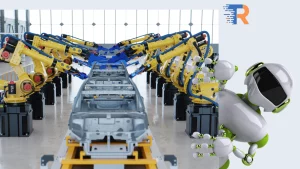
Types of Robotics and Automation:
Robotics and automation come in various types, each designed to perform specific tasks and operate in particular environments. Here’s an overview of some common types of autonomous robots:
-
Agricultural Robots:
– Explanation: These robots are designed to perform tasks in the agricultural sector, such as planting, harvesting, and monitoring crop health. Equipped with sensors and cameras, they can navigate through fields autonomously, optimizing farming processes and increasing efficiency.
– Example: The “Harvest CROO Robotics” system is an autonomous strawberry-picking robot that identifies ripe strawberries, picks them, and places them into containers, reducing the labor-intensive process of harvesting.
-
Delivery Robots:
– Explanation: These robots are designed for the autonomous delivery of goods. They navigate sidewalks and streets, avoiding obstacles and reaching specified destinations to deliver packages or food.
– Example: Starship Technologies has developed small, six-wheeled delivery robots that can carry groceries or other small items. They are equipped with sensors and cameras for navigation.
-
Industrial Robots:
– Explanation: Industrial autonomous robots are used in manufacturing and assembly processes. They can handle tasks such as welding, painting, and assembly, often working alongside human workers in a collaborative manner.
– Example: The UR5 collaborative robot by Universal Robots is widely used in industrial settings. It can be programmed to perform a variety of tasks and is designed to work safely alongside human operators.
-
Exploration and Inspection Robots:
– Explanation: These robots are designed for exploring and inspecting environments that may be hazardous or difficult for humans to access. They are commonly used in areas such as space exploration, underwater exploration, and inspecting infrastructure.
– Example: NASA’s Mars rovers, such as Curiosity and Perseverance, are autonomous robots designed to explore the Martian surface, collect data, and conduct experiments.
-
Medical Robots:
– Explanation: Medical robots are used in healthcare settings for tasks such as surgery, rehabilitation, and patient care. They can operate autonomously or in collaboration with medical professionals.
– Example: The da Vinci Surgical System is a robotic surgical platform that allows surgeons to perform minimally invasive surgeries with precision. The robot translates the surgeon’s hand movements into smaller, more precise movements of tiny instruments.
-
Service Robots:
– Explanation: Service robots are designed to assist humans in various daily tasks. This category includes robots for cleaning, security, and assistance to people with disabilities.
– Example: SoftBank’s Pepper is a humanoid robot designed to interact with humans. It can recognize emotions, engage in conversations, and provide information or assistance in retail or customer service environments.
-
Autonomous Vehicles:
– Explanation: These robots include self-driving cars, drones, and other autonomous transportation vehicles. They use sensors and AI algorithms to navigate and make decisions in dynamic environments.
– Example: Waymo, a subsidiary of Alphabet Inc. (Google’s parent company), develops autonomous vehicles for ride-hailing services. Their vehicles use a combination of lidar, radar, and cameras for navigation.
-
Educational Robots:
– Explanation: Educational robots are designed to teach programming and robotics concepts to students. They often come with user-friendly interfaces and are programmed to perform various tasks.
– Example: LEGO Mindstorms is an educational robotics platform that allows users to build and program robots using LEGO bricks and a programmable brick. It is widely used in schools to teach robotics and programming.
These are just a few examples, and the field of autonomous robotics continues to expand with ongoing technological advancements and innovative applications across diverse industries.
Conclusion:
In conclusion, the ascent of Robotics And Automation stand as a beacon of innovation, fundamentally altering industries by their ability to operate marks a pivotal juncture in technological evolution, fundamentally transforming not only the agricultural and industrial landscapes but also the core of how humanity engages with work and production. The seamless integration of these intelligent machines into our daily lives holds immense promise for increased efficiency, precision, and productivity, ushering in an era where responsible technological advancement aligns with societal needs.
As we navigate this transformative era, it is crucial to approach the integration of autonomous robots with a keen awareness of ethical considerations and societal implications. The symbiotic relationship between humans and Robotics And Automation stand as a beacon of innovation, fundamentally altering industries by their ability to operate, marked by responsible development and integration, will undoubtedly shape a future where technology serves as an ally, enhancing the human experience rather than replacing it. The journey towards a more automated and interconnected world is laden with possibilities, and it is through thoughtful and sustainable integration that we can harness the full potential of autonomous robots for the betterment of society.

